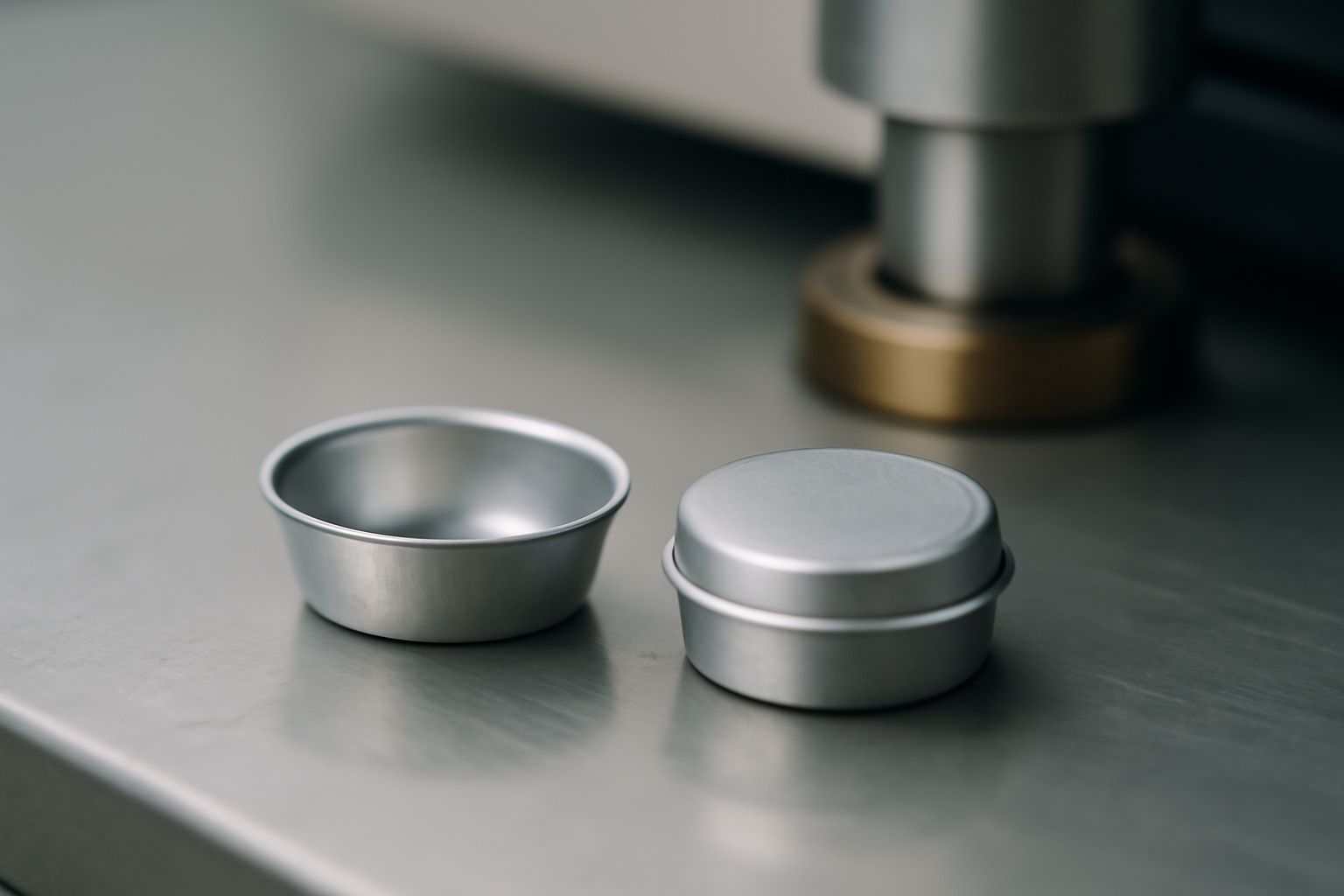Your cart is empty.
shop now
Your cart is empty.
shop now
Many labs see inconsistent data or equipment errors from not knowing their DSC pan specs. I see this happen often when researchers use general sample pans for all tests.
The key technical specifications for DSC thermal analysis sample pans include pan material purity, exact dimensions, temperature resistance, and seal reliability. Knowing and checking each factor helps the lab get truly accurate and repeatable results.

I always look carefully at technical specs before I choose new sample pans. These details can affect every result, sometimes more than the DSC instrument itself. Let’s examine the most important parameters one by one.
When I use a pan that doesn’t fit right, results drift or get rejected by the software. Dimensional accuracy keeps things smooth and effortless.
Critical dimensions for DSC pans include inner and outer diameter, pan depth, and lid fit. Tolerances must be tight, usually ±0.01mm, so pans fit securely and give stable measurements.
| Specification | Standard Value | Why It Matters | Industry Reference |
|---|---|---|---|
| Outer Diameter | 6.0–7.0 mm | Fits into DSC sensor cavity, ensures contact | DSC in labs |
| Height / Depth | 2.0–3.0 mm | Determines maximum sample size, avoids spillage | Instrument manuals |
| Tolerance | ±0.01 mm | Maintains accurate placement, reproducibility | OEM spec sheets |
| Lid Type | Flat / Pressed / O-ring | Affects seal and evaporation control | User guide |
I double-check the dimensions with a digital caliper before first use. Even a small difference in tolerance will affect how the pan sits on the sensor disk. Modern DSCs are sensitive, so always use pans that match the official spec table from your instrument brand.
Using standard-grade metals for sample pans often leads to unusual readings, especially if your analysis is sensitive to trace contaminants.
High-purity materials in pans, such as 99.99% pure aluminum or platinum, reduce background heat signals and boost result accuracy in DSC experiments.
| Pan Material | Purity Level | Impact on Analysis | Usage Example |
|---|---|---|---|
| Aluminum | 99.99% | Lowest thermal noise, stable baseline | Standard for organics, polymers [study] |
| Platinum | 99.95% | Will not react with samples at high temp | For metal, glass, and ceramic melting |
| Gold | 99.99% | Biological or enzymatic samples, no oxidation | For pharma and biotech sample analysis |
Choosing high-purity metals matters for every lab, no matter the budget. Lower purity increases unwanted peaks or reduces repeatability. I always look for purity certificates from suppliers for trusted test results.
Testing at high or low extremes can destroy a pan not made for those ranges. This can ruin rare samples and make me lose valuable test time.
DSC sample pans are rated for distinct temperature ranges depending on material—aluminum up to 600°C, platinum up to 1600°C—avoiding pan melting or warping during analysis.
| Material | Typical Range (°C) | Resistant to | Preferred Applications |
|---|---|---|---|
| Aluminum | -80 to 600 | Low to moderate heat | Polymers, organic solids |
| Platinum | -80 to 1600 | All temps, high corrosion | Metal melting, phase changes |
| Gold | -40 to 1000 | Most chemical attack | Reactive or rare pharmaceuticals |
| PTFE | -50 to 260 | Acids, bases, organics | Wet or corrosive tests (PTFE info) |
Choosing the right DSC pan for your temperature range protects test accuracy and instrument life. I always make sure to match the material to the DSC protocol. Melted pans are costly and can damage the calorimeter sensors.
Samples can lose mass or react with air if a pan lid does not seal well. This makes real-world results almost impossible to repeat.
Seal integrity in DSC pans stops leaks, controls sample evaporation, and prevents air from changing reaction outcomes. Pan type, lid style, and sealing force matter most.
| Seal Type | Leak Prevention | Sample Use | Key Advantage |
|---|---|---|---|
| Crimped Lid | Moderate | Solids, stable samples | Easy, quick closure |
| O-ring Seal | High | Volatile liquids, sensitive reagents | Better air/isolation |
| Pressure-resistant Lid | Very High | High-pressure, exothermic processes | Keeps gas-tight, high safety (pressure vessel) |
For most organics, a crimp seal is enough. For anything volatile, I pick o-ring or pressure cap pans which are safer and give more stable results over time. Careful pan sealing cuts down on sample loss and keeps the experiment real.
Knowing DSC sample pan technical specifications—purity, dimension, temperature, and seal—brings better test consistency. Choosing certified pans and matching specs protect my results and my instruments.